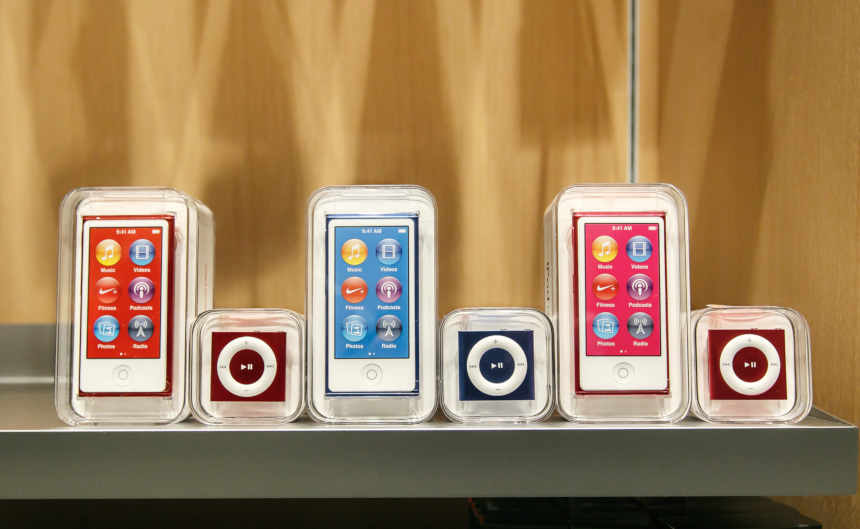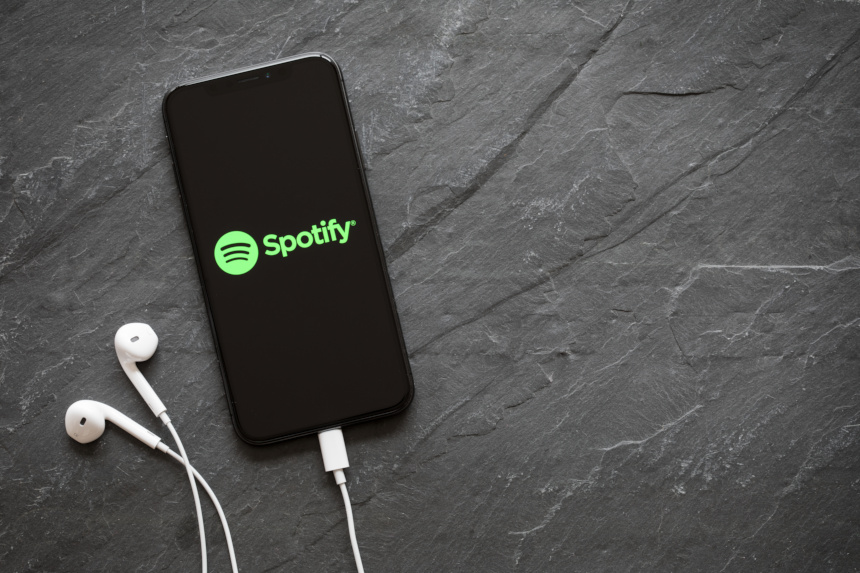From Walkman to Your Phone: 40 Years of Portable Music
Portable radio was nothing new in 1980. There had already been decades of transistor radios that allowed you to access music as you traveled or went through your day. The missing piece in music that you carried was choice. Sony answered the call, releasing the Walkman, a portable cassette player with a headphone jack, in 1979; it hit stores in America 40 years ago today. But even as the Walkman blazed trails, it was merely the first step in an ongoing evolution. Here’s a brief history of personal listening devices.
1. The Sony Walkman (1980)
The revolutionary part of the Walkman is that it opened the doors of selection along with portability. You could choose from your own selection of cassettes (or make your own!) and you were no longer bound to the strictures of frequently difficult-to-tune terrestrial radio stations. The Walkman had two lasting impacts on American culture: people with a Walkman said that they literally walked more, and the combination of the Walkman and cassette players in car stereos meant that cassettes overtook vinyl as the primary selling medium for music in 1983.
Star-Lord (Chris Pratt) plays “Come and Get Your Love” by Redbone on his Sony Walkman (Uploaded to YouTube by Marvel Studios)
The Walkman got an unexpected boost in 2014 when one was heavily featured in Guardians of the Galaxy; Sony released a new special edition Walkman in honor of the film, and the soundtrack was released on cassette as well. Sony no longer makes the device in Japan, but they are still produced in China for sale in other markets.
2. The Sony Discman (1984)
As you’d expect, the Sony Discman was a portable compact disc player, which made its debut in 1982. When the Discman hit, it had an immediate impact. Larger home CD players were forced to drop their prices in response, and an upsurge happened in the market across the board. Subsequently, CD sales increased. Dire Straits sold one million copies of Brothers in Arms on CD in 1985, and David Bowie made his entire catalog to that time available on the format that same year. With artists embracing the format, CDs overtook cassettes in sales by the early 1990s.
3. MP3 Players (1997)

MP3 as a format debuted in 1994, but at that point it was only a standard on computers. The South Korean company SaeHan Information Systems released the MPMan F10 in 1997; it hit the States in 1998. The Rio also debuted to strong sales in 1998; it even sparked one of the first lawsuits over digital music rights. The introduction of MP3 players was a watershed moment, as they removed the need for physical media, instead relying on files. The next several devices that had an impact on the market all relied on this approach. The format made its phone debut on the Samsung SPH-M100 in 2000; it was the first mobile phone able to play MP3 music.
4. iPod (2001)
Apple’s iPod was an immediate game-changer in terms of design, interface, and sheer volume of songs that you could fit on a device (1,000 songs? Insanity!). The development of iTunes concurrent with the launch meant that you could manage and update your library easily; you could assemble an entirely new playlist in minutes with a few clicks. The impact was seismic; as of December of 2019, Apple had sold roughly 400 million units across their various platforms. While the 7th Generation iPod Touch remains available, iPod sales dropped when the same type of functionality essentially became available on iPhones, eliminating the need for a second device.
5. Zune (2006)
Microsoft introduced an entire line under the Zune brand in 2006. In addition to the Zune Music Pass, which was a music subscription model, there was the actual Zune player. The Zune player went through four generations between 2006 and 2012 before the hardware versions were discontinued after struggling against the sales might of Apple’s devices. Though the Zune software still exists, the Microsoft music player was rebranded as Groove Music beginning with Windows 8.
The Zune scene (extended) from Guardians of the Galaxy: Vol. 2 (Uploaded to YouTube by FandangoNOW Extras)
The most notable recent appearance by a Zune came in 2017’s Guardians of the Galaxy Vol. 2; after Star-Lord’s Walkman is destroyed during the battle with Ego, Kraglin gives him a Zune loaded with 300 songs (which amazes Star-Lord, since he left Earth in the 1980s).
6. Spotify (2008)

Spotify isn’t a device, of course, but the app’s availability and pervasiveness on every other device have played a part in the transition of music from separate devices to phones. It’s the most popular service, with 286 million active users per month, 130 million of whom are using the paid option. Spotify has serious competition from the likes of Tidal, Apple Music, Amazon, and YouTube Music, but it consistently outdraws them and was rated the best service in Telegraph U.K.’s exhaustive dive into the apps in April of this year. The best part about Spotify for people who are into new music are its various Discovery features that point users to new music.
It’s hard to say what the future of portable music looks like. Some prognosticators consider wearables (like Air Pods, etc.) are the way that music will go. A number of other tech innovations involving virtual live music continue to appear, but many of those are experiential rather than portable (it’s hard to jog while watching Diplo spin on Fortnite). For the time being, it appears that main drivers of music remain apps, and it would make sense to watch for changes in how that apps are delivered for the next evolution in portable music.
Featured image: Ned Snowman / Shutterstock.com